Mossie: The Nessie of Mt. Fuji
Posted by: mystery_man on November 9th, 2012
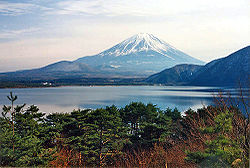
Mt. Fuji is the highest mountain in Japan, and one of the country’s most famous and instantly recognizable landmarks. The mountain, which is in fact a volcano, has been revered by the Japanese people for centuries. Mt. Fuji rises up from Yamanashi prefecture; it’s majestic peak widely visible for miles around, even from the bustling metropolis of Tokyo. In addition to its natural beauty, Mt. Fuji is also known for its mysteries.
This picturesque locale is said to be home to a mysterious animal, a strange lake creature affectionately referred to as “Mossie”, or “Mosse”, in the English spelling, and “モッシー” in Japanese, a name which was coined to emulate that of the alleged creature’s more well known cousin, Nessie. The creature is alleged to inhabit the five lakes that ring the foot of Mt. Fuji.
The Fuji Five Lakes, also known in Japanese as “Fujigoko,” (literally, “Fujis’s five lakes”) are located in an arc around the northern half of Mt. Fuji. The lakes were formed by previous eruptions of Mt. Fuji, when volcanic lava flows blocked and dammed up rivers and streams to create the lakes.
These five lakes are Lake Kawaguchi, Lake Motosu, Lake Saiko, Lake Shoji (the smallest of the five), and Lake Yamanaka, which is the largest of the five and also the third highest lake in Japan.

The volcanic nature of the lakes’ creation has made for some interesting features. For instance, Lake Motosu is connected to Lake Saiko and Lake Shoji by a system of underground waterways, and some of the lakes still have visible protrusions of hardened lava.
For years, the Fuji Five Lakes have been the setting for a series of strange sightings of an unidentified creature in the water. During the 1970s, “Mossie” was brought to the attention of the general public due to a flap of sightings of something odd in the lakes. People were reporting large, mysterious black shapes or shadows in the water, as well as sudden, inexplicable wakes or surges. The the back of a mysterious animal was seen at times as well.
These sightings drew a lot of media attention and public interest at the time. The possibility of some kind of creature lurking in the lake captured people’s imaginations and one group of determined fisherman took it upon themselves set about making a concerted effort to see if the strange animal could be captured.
A network of sturdy nets were set up in an attempt to catch it, however, not long after it was discovered that the nets had been ripped apart by something large. Around the same time, some boats equipped with sonar equipment were scouring the lakes in the hopes of finding evidence of the creature, and a few of these reported picking up large, unexplained images.
In the 1980s, sightings continued and the creature was even allegedly caught on film in October, 1987. A Mr. Yoneyama was out with three others taking pictures of the lake and its surroundings when they saw a surge of water out on the otherwise calm lake. Within this surge, they reported seeing 3 to 5 meters of the exposed back of something they could not identify, which was described as being rough like that of a crocodile. They were able to capture the animal on film, but the results proved to be inconclusive.

Mossie is reported as being up to 30 meters in length, with a horny, bumpy back like an alligator or crocodile. Some reports have also mentioned a long dorsal fin like that of a shark. However, the majority of sightings have been simply of large, dark shapes swimming under the surface of the water, with no details visible. Sightings of the animal have dropped off in recent years, but a group in the village of Kamikuishiki has been investigating the Mossie phenomena since 2005.
The question of what Mossie could be is complicated by the nature of the lakes themselves. The Fuji Five Lakes are not particularly ancient, being formed by relatively recent volcanic activity. It is thought that the lakes were formed by lava flows in the 9th and 10th centuries. This makes it impossible for the creature to be some type of prehistoric animal trapped in the lakes millions of years ago.
There are no rivers or natural drainage connected to the lakes either, so there is no possibility that something has travelled there from the sea through this route. In addition, many of the fish in the lakes were stocked, and there is no species of fish known there that even approaches a size large enough to cause the reports. These facts make it difficult to determine a biological possibility of just what Mossie could be.
Nevertheless, there are some avenues that we can speculate on. The lakes are popular fishing spots, and could possibly have been the target of people secretly releasing sport fish into the lakes. This sort of practice is not unheard of in Japan. For instance, the largemouth bass has been present in Japan since 1925, and was originally released more widely in 1977 in an effort to control populations of the invasive bluegill.
Fishermen soon discovered the desirability of the bass as sport fish and it wasn’t long before the fish were being clandestinely and illegally released into lakes all over Japan, where they have since bred out of control to become the pest and threat to native species they are in many areas today. Perhaps something similar happened in the Fuji Five Lakes with other types of exotic fish?
Similarly, there have been many efforts in Japan to cultivate exotic species for food. The snakehead fish is one notable example. These fish are native to Africa as well as Asia, where they are highly valued in some countries as a food fish.
Snakehead
The fish are a notorious invasive species in many areas, further compounded by their hardiness and adaptability. Voracious predators, snakeheads can survive for long periods outside of the water due to their ability to breathe air, and are known to sort of “walk” across land from one habitat to another.
This is an adaption to surviving seasonal drying of shallow water habitats, and allows them to spread out to new areas where they take hold and overrun natural ecosystems. Snakeheads are typically found in more tropical climates, but have demonstrated the ability to overwinter in more temperate climates such as Japan.
Japan has also seen efforts to cultivate snakeheads as a food source, and as in many areas, the fish have started popping up in places where they are unwanted. These fish can get quite large and they look somewhat reptilian in appearance, so seeing one out of place could certainly startle an eyewitness who had never seen one before.

Some have pointed to giant carp (above) or giant catfish (below) as possible explanations for Mossie. While there are Crucian carp that live in the lake, these fish only reach sizes of around 3 and a half pounds or so. If Mossie is a carp, it would have to be a very large introduced species such as the Siamese giant carp (Catlocarpio siamensis).
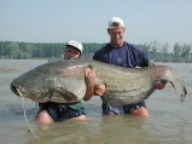
There are no large catfish known in the lakes either, so again we would be looking at an introduced type of catfish capable of reaching huge sizes such as the Wels catfish, a very large species native to Europe that can reach sizes of around 4 meters in length (13 feet). Catfish are considered a delicacy by many and are sought after fish, so perhaps as with snakeheads someone could be inclined to introduce them to the lakes.
It has also been proposed that the culprit could be alligator gar (Atractosteus spatula). These fish reach lengths of 8 to 12 feet long, and have a very exotic appearance that many Japanese would not be used to seeing. However, their typical habitat is rivers, and it is thought that these fish require running water to spawn. This makes the Fuji lakes an undesirable habitat for alligator gar, considering these lakes are not connected to any rivers.
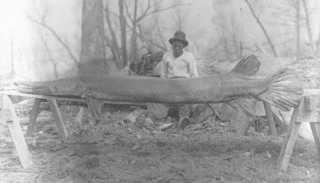
Alligator gar
The idea of some very large type of eel has also been considered. A large type of Southeast Asian eel has been released into Japanese lakes before, most notably in Lake Ikeda, which is incidentally the home of another Japanese lake monster, nicknamed “Issie.”
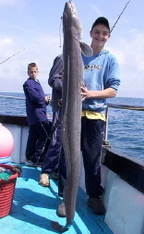
Then there is the inevitable suggestion that sturgeon could be behind the sightings. In this case, the possibility is supported somewhat by the descriptions and evidence. The mention of a rough and scaly back fits in well with sturgeon, which are covered with “scutes,” or large, bony plates, rather than scales. In addition, sturgeon can reach very large sizes, with lengths of 12 feet not unheard of. It is plausible that they could even reach significantly larger sizes than this.
Sturgeon are known to have been released into the Fuji Five lakes before, so it is known that they are there. However, sturgeon are largely benthic feeders, meaning they feed on the bottom, and they do not typically go near the surface where they would be readily seen.
Sturgeon
One main problem with all of these candidates is the reported sizes of Mossie. None of these fish I have mentioned reach sizes anywhere close to 30 meters, which is the size described in some reports. Indeed these fish do not even approach 30 feet.
Another point to consider is the well visited nature of the area involved. The Fuji Five lakes are a popular destination for tourists from all over Japan, who flock to the lakes for a wide range of activities, including camping, fishing, and water sports. Surely, a large creature in the lake would be spotted more frequently? The scenic views of Mt. Fuji also draw a large number of photographers, yet photographic evidence of Mossie remains extremely scarce.
Nevertheless, is there a chance that a large, unidentified creature is lurking somewhere in these lakes? Perhaps one of these animals is swimming out there right now, cutting a path through the majestic reflection of Mt. Fuji upon the water.
About mystery_man

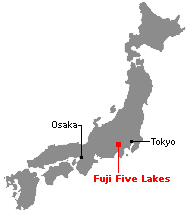



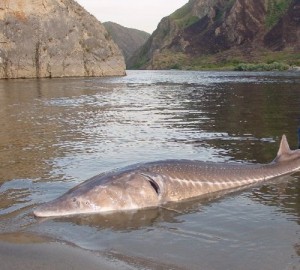
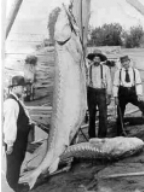
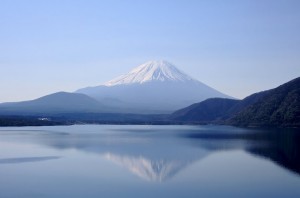








The wels catfish is quite often used as an explanation for lake monsters, but in most cases it´s based on wrong assumptions, because they don´t grow as big as many people think. It´s a big problem that a lot of big-fish-stories have found their way even into technical literature. In reality, there is not even a single confirmed specimen which reached 3 m, and even 2 m is already quite big for this species in most areas. Alligator gars are also “victims” of big-fish-stories. There is no doubt this are very big fish, but 4 m is still too big, maximum sizes are also “only” around 3 m for this species.